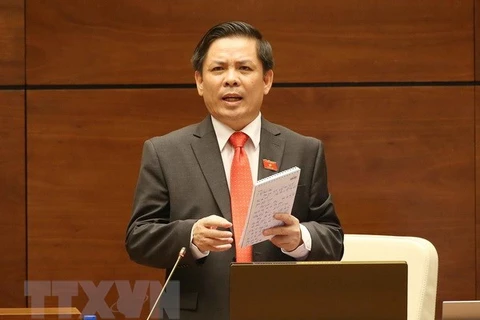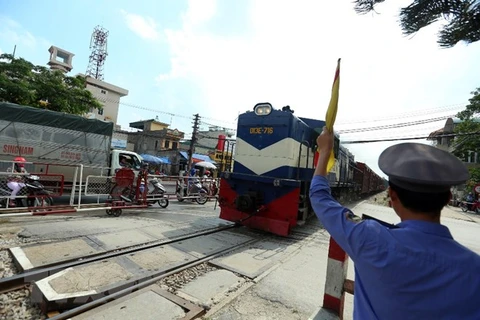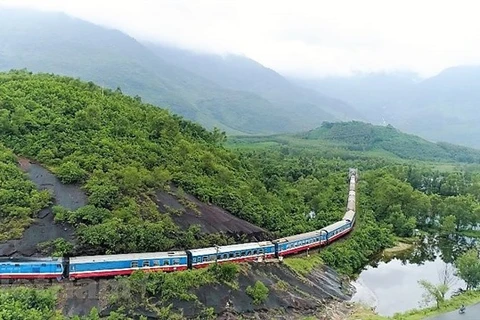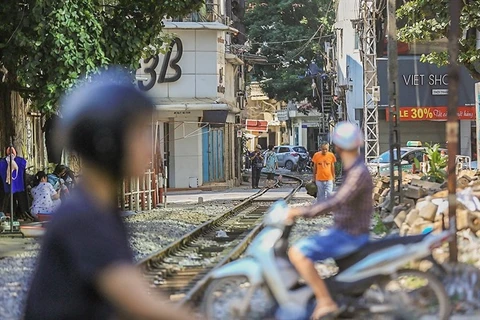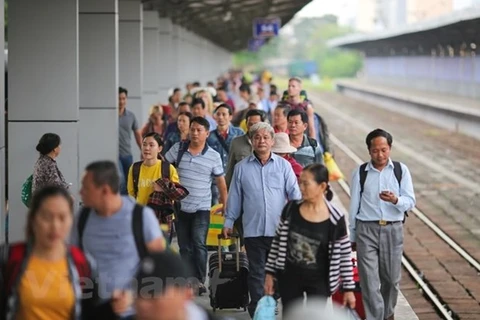Hanoi (VNA) - Several derailments have been recorded on the North-South railway route recently. Has the rail sector found the causes of these incidents and devised solutions to minimise them?
According to representatives of State agencies and the Vietnam Railways Corporation (VNR), there are many causes of these incidents, and the railway sector will maintain and upgrade the railway infrastructure to ensure safety.
Vu Anh Minh, Chairman of the VNR Council of Members, said the derailments since the beginning of 2019 are being analysed and their causes are being clarified. Among these incidents, the one in Bien Hoa city was triggered by broken tracks, but how the tracks were broken still needs to be examined.
“It could be the result of underlying cracks, which may lead to broken tracks and derailment when a train carrying a heavy load passes by, not because of problems in the examination process,” he said.
Minh also did not rule out the possibility that outdated infrastructure, both in terms of tracks and carriages, or operational flaws resulted in derailments in many different localities.
“There are many old rail tracks. Even at the Hanoi Railway Station, the rail track system’s use-by date has expired, but the sector hasn’t been able to stop using it because there won’t be conditions to replace it in the near future,” he admitted.
The VNR leader noted about 170km of track on the Ho Chi Minh City-Nha Trang route haven’t been maintained for hundreds of years. The tracks have worn out, reducing friction between trains and track which has raised the derailment risk.
He pointed out the fact that too little capital is allocated for railway infrastructure maintenance, so the VNR has had to prioritise money for more urgent works first. With only more than 2 trillion VND (85.7 million USD) allocated for maintenance each year, it will take 60 – 70 years to finish maintaining all tracks.
“The obstacle is the weak railway infrastructure, including bridges and tunnels. Particularly, the Nha Trang-HCM City section has up to 473.5km of trackbed, track and railway sleepers that haven’t been replaced for hundreds of years, so they have become worn out and weak,” Minh explained.
The VNR chairman said private investment in the sector would generate socio-economic benefits as it would help cut logistics costs and ensure safety for people’s travel, and it doesn’t mean investing in his corporation.
“The VNR only helps the State manage infrastructure. Benefits are generated not for investors but mainly for society. That’s why the railway sector, even in developed countries in the world, is unable to attract private investment. The State still has to invest as railway investment costs are too large while the payback period is long. Only railway stations and inland container depots connecting with railways and seaports can be privatised,” he stressed.
According to Deputy Minister of Transport Nguyen Ngoc Dong, the derailments are attributable to old rail tracks or flaws in the operation of trains.
“The Ministry of Transport is asking the VNR, departments and authorities to examine and analyse the causes. The departments recently inclined towards track-related causes because many old tracks haven’t been replaced,” he noted.
The Deputy Minister added the Government approved the investment policy and scope for four railway upgrade and repair projects to the tune of 7 trillion VND.
A leader of the Vietnam Railway Authority said an independent investigation team has been set up to review the recent incidents. The authority has also demanded the VNR enhance maintenance.
He added: “The railway incidents are not accidents, so the VNR is responsible for investigating causes. The authority has also asked this firm to issue conclusions on the recent incidents in February.”-VNA

